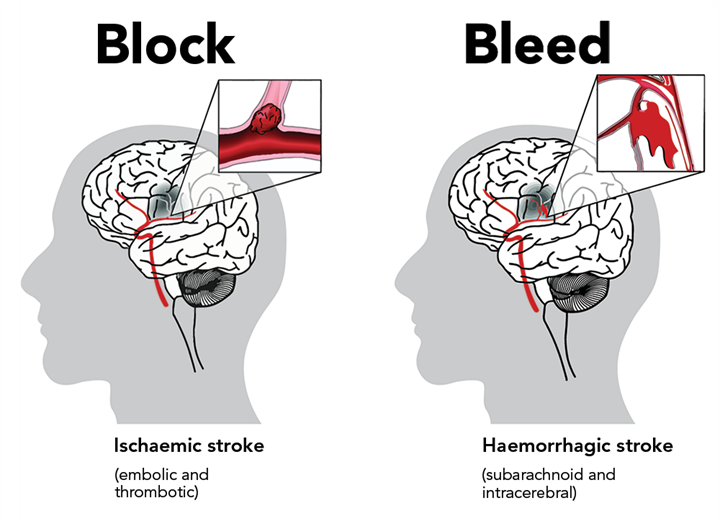Find Exactly What You're Looking For:
Understanding the Types of Stroke: Differentiating and Addressing the Challenges

A stroke, often referred to as a "brain attack," occurs when blood flow to the brain is disrupted, resulting in the loss of brain function. There are different types of stroke, each with its own causes, characteristics, and implications.

A stroke, often referred to as a "brain attack," occurs when blood flow to the brain is disrupted, resulting in the loss of brain function. There are different types of stroke, each with its own causes, characteristics, and implications. Recognizing and understanding these types is crucial for effective diagnosis, treatment, and prevention.
Here are the main types of stroke:
Ischemic Stroke: Ischemic strokes account for the majority of stroke cases, accounting for about 80% to 85% of all strokes. They occur when a blood vessel supplying the brain becomes blocked, reducing or cutting off blood flow. The blockage is typically caused by a blood clot (thrombus) that forms within an artery in the brain or travels from another part of the body (embolus). Common underlying causes include atherosclerosis (narrowing of the arteries), heart conditions (such as atrial fibrillation), and blood clotting disorders. Prompt medical intervention, such as the administration of clot-dissolving medications or mechanical removal of the clot, is crucial to restore blood flow and minimize brain damage.
Hemorrhagic Stroke: Hemorrhagic strokes occur when a blood vessel in the brain ruptures and causes bleeding. This type of stroke accounts for approximately 15% to 20% of all strokes but is associated with a higher risk of disability and mortality. There are two main subtypes of hemorrhagic stroke: intracerebral hemorrhage and subarachnoid hemorrhage. Intracerebral hemorrhage happens when a blood vessel within the brain ruptures and bleeds into the surrounding tissue, while subarachnoid hemorrhage occurs when there is bleeding into the space between the brain and the tissues covering it. High blood pressure, aneurysms, arteriovenous malformations (AVMs), and blood-thinning medications are some common causes of hemorrhagic stroke. Treatment involves stopping the bleeding, relieving pressure on the brain, and managing any underlying causes.
Transient Ischemic Attack (TIA): Often referred to as a "mini-stroke," a transient ischemic attack is a temporary disruption of blood flow to the brain, leading to stroke-like symptoms that resolve within a short period, usually within minutes to a few hours. TIAs are warning signs that should not be ignored, as they indicate an increased risk of a more severe stroke in the future. They are caused by a temporary clot or blockage, similar to an ischemic stroke. Prompt medical evaluation is crucial to identify and address the underlying causes of the TIA to prevent a full-blown stroke.
It's important to note that regardless of the type of stroke, early recognition and seeking immediate medical attention are vital. The longer the brain is deprived of oxygen-rich blood, the greater the risk of brain damage and long-term disability.
Prevention strategies such as managing high blood pressure, maintaining a healthy lifestyle, addressing underlying medical conditions, and following medical advice regarding medications or interventions can significantly reduce the risk of stroke.
In conclusion, understanding the different types of stroke empowers individuals to recognize the signs and symptoms, seek appropriate medical care, and take preventive measures to minimize the risk of stroke. By raising awareness and promoting education about strokes, we can collectively work towards reducing the burden of this potentially devastating condition and supporting those affected on their journey to recovery.
